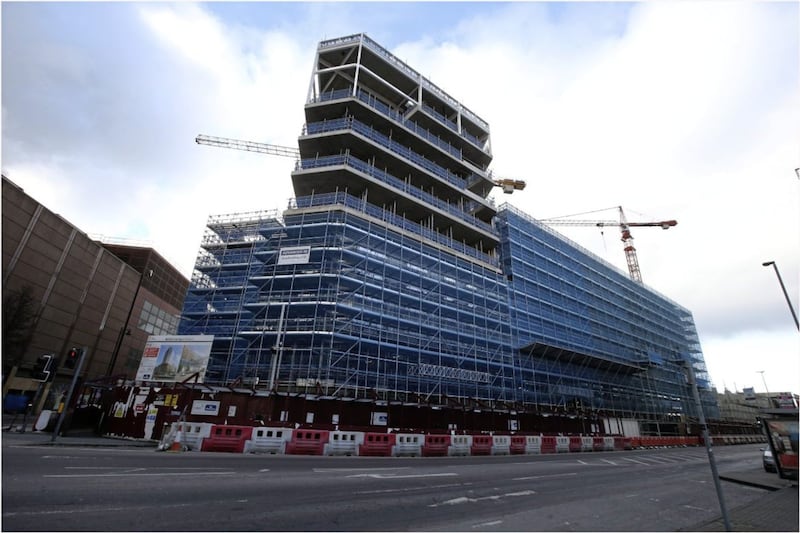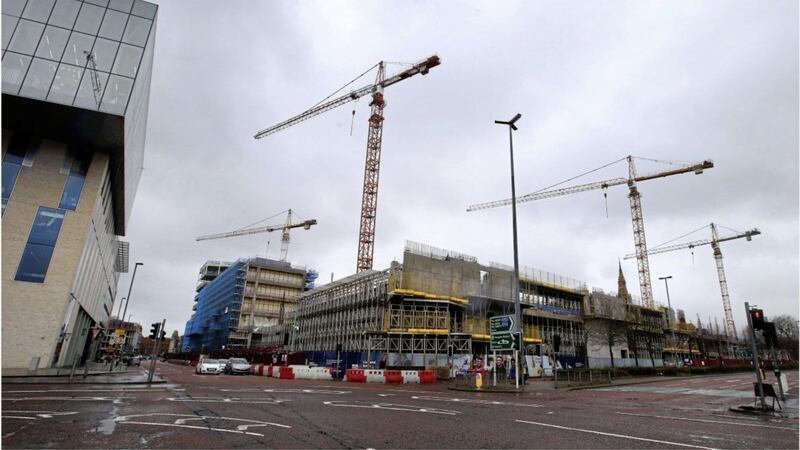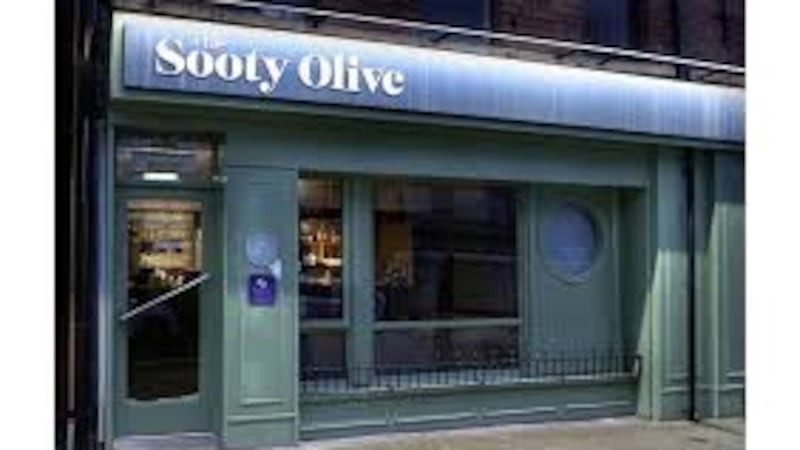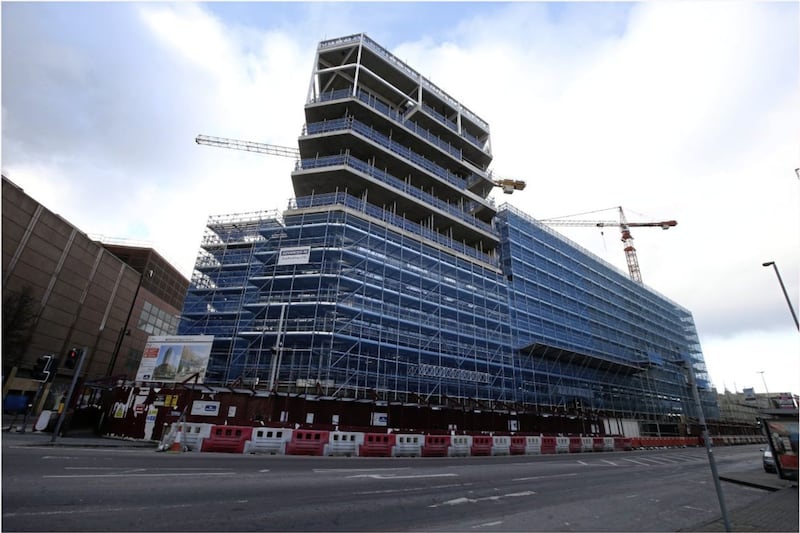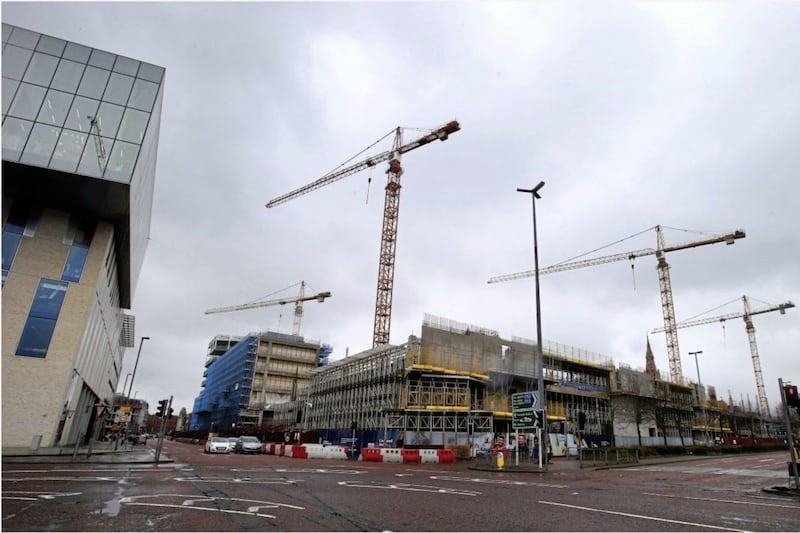I am the president of the State Building and Construction Trades Council of California. We represent 450,000 construction workers and 51,300 apprentices.
I spent 35 years as an ironworker building skyscrapers and bridges in Los Angeles. Originally, I am a son of Belfast. I left at the age of 21 to work in New York.
I was born in Columbus Street, which sat between Moffat Street and Great Georges Street. My family has lived in Sailortown and the York Street area for as far back as we can trace - 200 years.
My great-grandfather, John Quinn organised working people in the mills, docks and shipyards of Belfast. Because of slave wages, starvation conditions and the extensive use of child labour, they helped lead the non-sectarian general strike of 1907.
For the duration of the strike, Catholics and Protestants stood together in pursuit of a common cause, decent wages and a union to represent them. All of this occurred in the area that now hosts the new construction site for the Ulster University campus.
As a labour representative in California, it is part of my job to ensure that residents in the vicinity of major construction projects benefit by receiving the opportunity of entering apprenticeships in the 16 different construction trades, from carpenter to electrician, plumber to bricklayer.
These apprenticeships allow young people earn a living as they work and train over a four-to-five-year period. It enables them to live in the middle class, buy a home in their community, and educate their children.
They also provide for a skilled and trained workforce of around 500,000 building trades members who pay taxes, drive the economy, and build the public and private infrastructure projects that make California the sixth largest economy in the world.
These programmes are all done in partnership with private contractors who perform construction using the least amount of people, in the least amount of time, done once, done right, under the lowest bid.
On a recent trip to Belfast, I visited several large construction sites, the most prominent being the Ulster University campus on York Street, which boasts in excess of 5,000 construction jobs, according to the university.
It is being undertaken by Lagan Construction Group and the Somague Group, a Portuguese firm. The university described this £250 million project as “one of the most significant investments ever made in north Belfast”.
Much to my amazement, I found that it required none of the advantages of hiring a local workforce that would drive the economy and enable residents to gain access to the middle class.
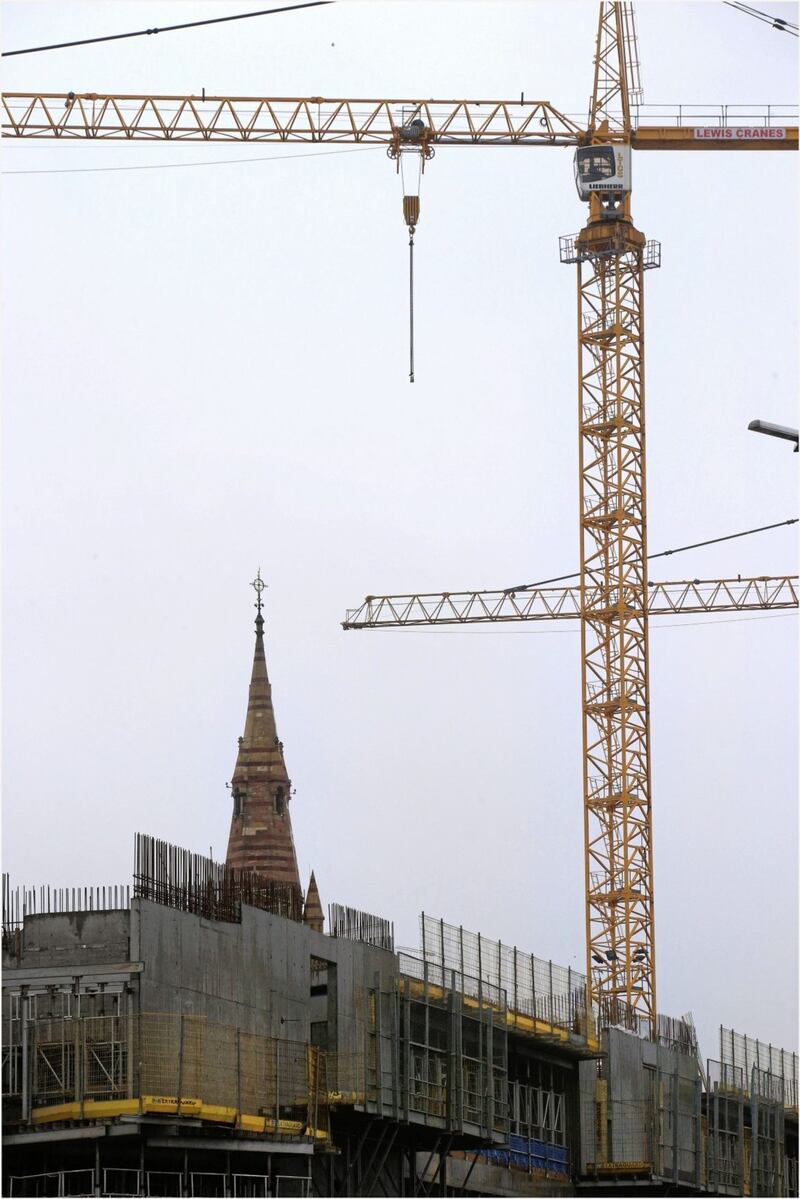
The site was not benefitting the mass of Belfast residents who live in underprivileged neighbourhoods with high unemployment and few prospects for learning a skill that will allow them to have a decent quality of life while supporting the economy of Belfast and Northern Ireland.
Instead, I found that the vast majority of workers were being transported in from outside of the country to work for low wages, undermining local workers and their families.
At the time of my visit, many workers were living in derelict buildings adjacent to the worksite, where once the newsboys club was situated, at the corner of Frederick Street and York Street.
Opportunity were also being taken away for young people living in neighbourhoods such as the Shankill Road, Carrick Hill, the New Lodge Road and Tiger’s Bay.
On my visit, I spoke to numerous skilled tradesmen and women. I asked bricklayers, cement masons, glaziers, electricians and plumbers why they were not working on the university campus or other large projects.
They told me that local tradespeople were involved in some demolition work, but apart from that, low wage workers from outside Ireland were being shipped in.
Considering the hardships that both communities have suffered from poverty, division and lack of employment, this building boom that is taking place in Belfast is a golden opportunity to drive the economy.
There is no reason why at least 80 per cent of the workers should not be Belfast residents, with an apprenticeship preference for disadvantaged young people. The training and employment of these residents should be required as a part of a project's approval. These requirements are common throughout the US.
Most are called community benefits agreements, which ensure that local residents are given access to opportunities. These agreements create a tax base that supports schools, hospitals, transportation, and other infrastructure.
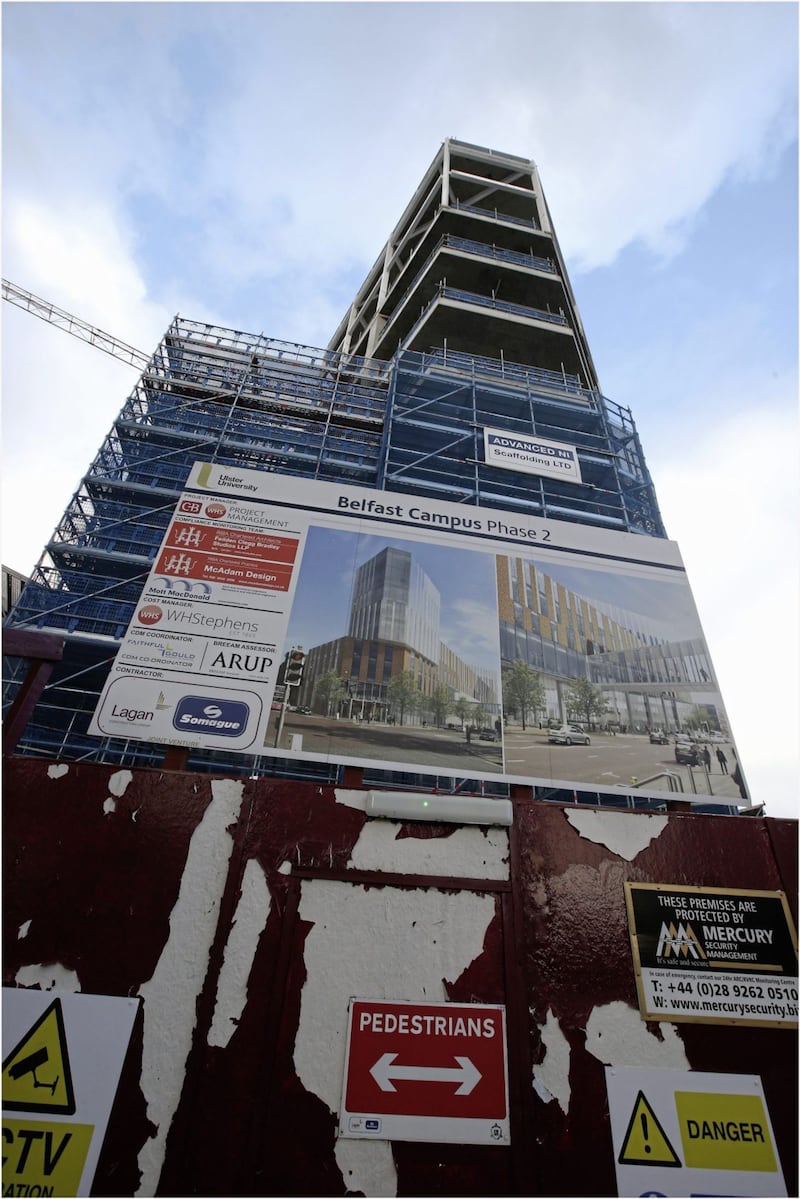
At this time in Belfast, we have fuzzy, vague, unenforceable language that calls for a ridiculously low local hire and apprenticeship requirement, which is really just a cover for developers and contractors at a time when we have a city with the worst unemployment in the UK.
We have the workforce to build these projects as long as they are paid a decent wage that will allow them to support a family and home.
It is time for Belfast’s leaders to demand on all large private and public works projects an 80 per cent hiring ratio for local workers; a wage rate for all construction workers that provides enough income to support an average family living in an urban area and an apprenticeship standard that includes a set percentage of offerings for the local unemployed.
In the gang-infested neighborhoods of Los Angeles, one of the community groups that I worked with had a motto - ‘Nothing stops a bullet like a job’ - and that is a fact which is very applicable to Northern Ireland.
There is nothing to stop Belfast and any other councils from altering their permit approval, grants, tax incentives and public works policies to include these standards.
There is no law that stands in the way. All that is required is political will; for politicians from every party to do their duty and help the people they were elected to represent.
